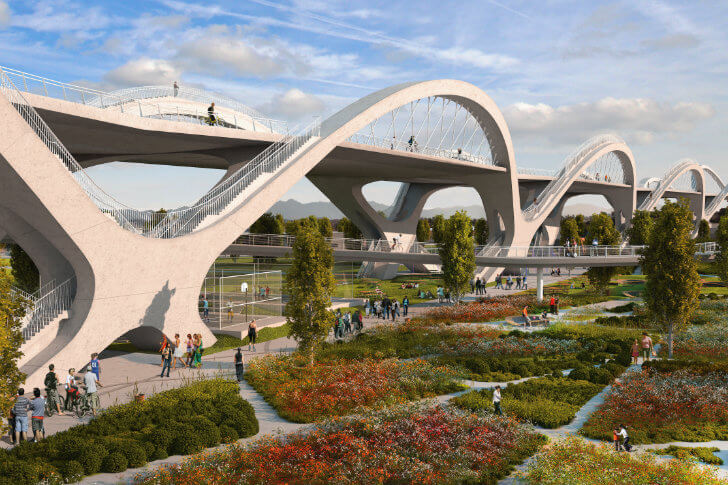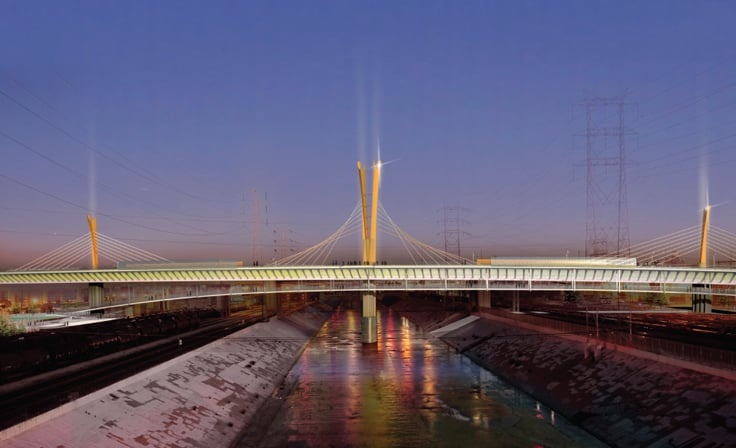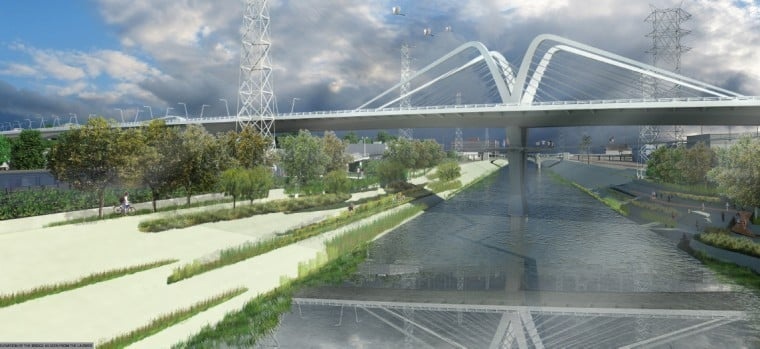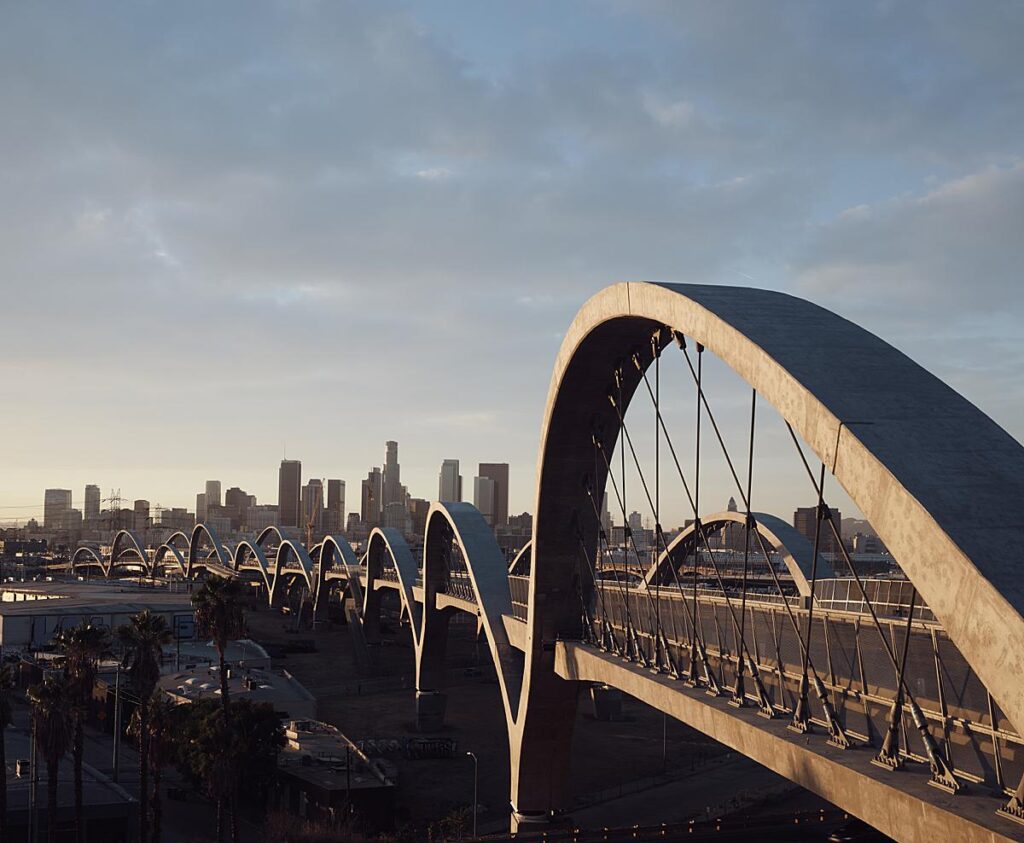교량은 차나 사람이 통행하는 교면(deck)의 위치에 따라 일반적으로 상로교, 하로교 그리고 중로교로 구분하며, 아치교에 적용 분류하면 다음과 같다.
상로아치교(deck arch bridge)

하로아치교(through arch bridge)

중로아치교(half-through arch bridge)

(images courtesy of Innovative bridge design handbook)
아치리브(rib)는 주로 강재(steel)가 많이 사용되는데, deck arch type은 전통적으로 콘크리트를 많이 사용했다. Through arch 중에 콘크리트 리브를 사용한 교량들이 더러 있지만, 오늘 소개하는 Sixth street bridge(혹은 viaduct)같은 큰 규모의 교량은 찾기가 쉽지 않다.
지진이 빈번한 LA에 왜 이런 육중한 콘크리트 아치교를 적용했을까? 라는 의문이 들지만, 나보다 똑똑한 사람들이 선정해서 만든 교량이니 입꾹닫 🙂
2012년 국제공모전을 통해 최종 3개안(아래 순서대로 HNTB, AECOM, and Parsons Brinckerhoff) 중 HNTB안이 선정되었다.



(images courtesy of Downtown Los Angeles)
그런데 준공된 교량을 보면 선정안과 달리 pier형태가 X형에서 Y형으로 변경된 것을 볼 수 있는데 궁금해서 구글링을 해보니 이럴만한 사연이 있었다.

(photo courtesy of Architectural Photography Almanac)
Upon contract award, the team continued pursuing the first option – 10 spans of continuous tied arches with X-piers. After more closely studying the concept, however, a reliable seismic system could not be devised, even after considering novel approaches such as a “rocking response” between the legs of the X-piers. While the concept has been considered during seismic retrofits, they determined it was not appropriate for a new structure.
Eventually, the team chose to move forward with the second concept. The Y-Bent design enabled the use of a conventional moment frame in the columns, a more traditional way for bridges to resist seismic forces.
아치리브는 횡방향 보강없이 바깥쪽으로 기울어진 형상이라 지진시 구조적으로 취약점이 많을텐데 이를 해결해 낸 엔지니어들의 수고는 대단하고 칭찬할 만하며, 특이하게 Y-bent 중간에 설치한 2.1m dia의 triple-friction pendulum bearing은 크기면에서 아마도 최초일 것 같다.